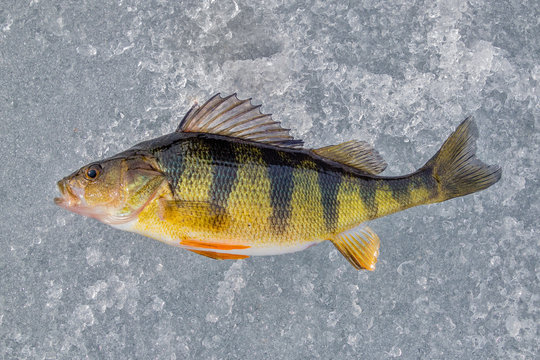ANIMAL: Yellow Perch Perca flavescens Type of Animal: Perch Habitat: Ponds, clear lakes, clear creek pools near vegetation, river pools, rivers, shallow areas in lakes, littoral zones of lakes, slow-moving streams, man-made lakes, reservoirs, river impoundments, shallow low-current tributary streams, shore areas among reeds/aquatic weeds & docks, small weed-filled water bodies w/ mucky/sandy/gravel bottoms, pelagic shores, inshore surface waters, river slackwaters, rock piles, bottom drop-offs, flat bottom reaches near bottom structures, submerged vegetation edges, shallow nearshore waters, stream shorelines among bay grass beds, wetlands w/ sand/gravel/rubble substrate & submerged trees/brush, prefer freshwater but also do well in brackish/saline water, prefer clearer water but also do well in eutrophic & turbid water, not found deeper than 49 ft & prefer temps of 50-79 F & pH of 3.9-9.5 (for growth neutral 7-8 but overall thrive in acidic to moderately basic waters) Location(s): North America. Native in many areas, introduced in others. Appearance: Elongate oval-bodied fish w/ rather long blunt snout, 2 separate dorsal fins, upper head-body area varies from bright green to olive to golden-brown or color mix, 6-8 blackish vertical bars over yellowish-green/yellow color, yellow to green dorsal/tail fins, yellow to silvery-white anal/pelvic fins, white ventral area, juveniles paler w/ almost whitish background color Food/Diet: Fish (including smaller members of own species), fish eggs, crustaceans, insects, insect larvae, zooplankton, snails, worms, benthos Status in Wild: Stable Conservation: Not applicable Lifestyle: Schools of 50-200 fish Additional Info: Called: Male Female Young: Fry/Fingerling Group: School Weight: Male: 6-10 oz Female: 9-16 oz Gestation: 11-27 days Life Span: 7-10 years Body Length: Male: 7-11 in Female: 10-15 in Young: 1 in Tail Length: 2 in, same for both sexes Main predators of adults are pike, muskies, walleye, bass, trout, larger adult perch, burbot, bowfins, eagles, osprey, hawks, gulls, cormorants, pelicans, loons, herons, kingfishers, diving ducks, mergansers, otters, bears, large crappie, & large sunfish. Larger perch, crappie, & sunfish prey on juveniles/young. Adults found in deeper water than juveniles but juveniles more often found in pelagic water. Males sexually mature at a year old, females at 2 years old. Also called jumbo perch, jack perch, perch, striped perch, American river perch, Dodd fish, American perch, preacher, ringed perch, raccoon perch, lake perch, coontail, & ringtail perch. Females tend to live longer than males. Spawn from late February to early July w/ spring peak w/ females laying 2,000-109,000 eggs in gelatinous strands. Multiple males mate w/ single female. Spawning usually occurs at night or in early morning. They are very hardy fish. Fun Fact(s): Often considered the “ultimate pan fish.” They’re very popular game fish. Meat said to have mild sweet flavor & firm flaky texture. These fish can often be caught all year round.
